In the minimally lit eastern gallery on the fourth floor of the Museum of Islamic Art, the everlasting magic of charismatic boxing legend-activist Muhammad Ali glows warm and bright through an impressive spread of memorabilia.
Titled ‘Muhammad Ali: Tribute to a Legend’, Qatar Museums’ (QM) heartfelt homage to the three-time world heavyweight boxing champion presents us with “a unique collection of artefacts spanning the first 18 years of his 21-year professional boxing career, from 1960 until 1978”.
The exhibition, which brings together 20-odd artefacts that have been collected and curated under the auspices of the 3-2-1 Olympic and Sports Museum, will be open to public from Thursday. Muhammad Ali, formerly Cassius Clay, passed away on June 3 at the age of 74.
To make good sense of the “narrative” and offer you solid reasons to visit the exhibition, Community gives you a ringside glimpse into the objects on display:
l A black and white photograph featuring Muhammad Ali and Joe Frazier at a press conference in advance of their October 1st, 1975, Heavyweight Championship dubbed the Thrilla in Manila, Philippines. Ali would win the fight in the 14th round by technical knockout. The photograph is signed by Ali and Frazier in blue marker.
l A comic book published by DC Comics in 1978 featuring Superman vs. Muhammad Ali. The 72-page book features Superman teaming up with the Heavyweight boxing champion to defeat an alien invasion of Earth. The comic is signed “Muhammad Ali” in black marker.
l Muhammad Ali over Sonny Liston signed photograph in the ring, May 25, 1965. The black/white version of arguably the most famous sports photo ever. This photograph has been personally signed by Muhammad Ali.
l An original white felt pennant from the October 29, 1974, World Heavyweight Boxing Championship fight between Muhammad Ali and George Foreman. The fight, known as The Rumble in the Jungle, was held in Kinshasa, Zaire, Africa. Signed by Ali in black marker.
l An original red felt pennant from the same fight in Kinshasa. Although Foreman was heavily favoured to win the bout, Ali was clearly a fan favourite, as suggested by the pennant; Ali regained the World Heavyweight title when he knocked out Foreman in the eighth round. Signed by Ali in black marker.
l An original black felt pennant from the October 29, 1974, World Heavyweight Boxing Championship. The pennant reads “Muhammad Ali vs George Foreman.” Signed by Ali in silver marker.
l A closed circuit poster of Muhammad Ali vs. Sonny Liston.
l Muhammad Ali’s ring: In 1978, Muhammad Ali defeats Leon Spinks at the Louisiana Superdome in New Orleans to win the world heavyweight boxing title for the third time in his career, the first fighter ever to do so.
l Muhammad Ali Boxing Gloves (Fight-Worn). The first fight between Muhammad Ali and Sonny Liston for boxing’s World Heavyweight Championship were among the most significant fights in the sport’s history. It was held in February 1964 in Miami Beach, Florida. Ali won when Liston gave up at the opening of the seventh round.
l A ticket stub from the Muhammad Ali vs. Ernie Terrell Heavyweight Championship fights, February 6, 1967 Houston, Texas. Ali would go on to win a 15-round to retain the title of Undisputed Heavyweight Champion. The front of the ticket stub is signed by Ali in black marker.
l Muhammad Ali photograph, WBA/WBC Heavyweight Champion 1964.
l A March 9, 1964 Sports Illustrated Magazine with Cassius Clay on the cover entitled: Cassius – His Fight and His Future.
l An original ticket from the Muhammad Ali vs. Sonny Liston Heavyweight Championship fight held in Lewiston, Maine, on May 25, 1965. The Ali-Liston bout at St. Dominic’s Arena was their second meeting for the WBC Heavyweight Championship. Ali would win the fight after knocking down Liston in the middle of the first round. Ali refused to go to his corner after the knockdown; instead, he stood over Liston, gesturing and yelling at him.
l A ticket to The Greatest world premiere at the Plitt Century Plaza Theatre in Century City, California, on May 19, 1977. The ticket is signed by Ali at the bottom in blue marker.
l A closed circuit programme from Muhammad Ali’s 51st professional fight versus Joe Frazier, called ‘The Thrilla in Manilla’, Ali has autographed the cover of the programme in black ink.
l A signed script of The Greatest by Muhammad Ali in 1977. The 130-page production-used script features front and back black flap covers and gold coloured “The Greatest” lettering on the front cover. The script is signed on the front lower cover by Ali in silver marker.
l A trophy awarded to Cassius Clay (Muhammad Ali) for being named the most outstanding boxer at the 1960 A.A.U. (Amateur Athletic Union) National Amateur Boxing Championships held in Toledo, Ohio, from April 7-9, 1960. Clay would win the Light Heavyweight division with a second round T.K.O. over opponent Jeff Davis in the final Light Heavyweight bout and would go on to be named the Most Outstanding Boxer of the 119 boxers competing in the event throughout all weight classes. The award is signed on the back of the base twice by Ali.
l A heavily notated and signed boxing glove of Cassius Clay in 1960. This is one of the most impressive Ali autographed piece ever offered. On a WinnWell left-handed glove, he writes:
Olympic Bound,
I am the 1959 National A.A.U. Champion (LIGHT) (HEAVYWEIGHT).
I am the 1960 National A.A.U. Champion (LIGHT) (HEAVY W.)
I am the 1959 National Golden Gloves Champion (LIGHT HEAVY W.)
I am the 1960 National Golden Gloves Champion (HEAVYWEIGHT.)
I am the 1960 United States Olympic Champion (LIGHT HEAVY W.).
Your Friend,
Cassius Marcellus Clay
‘Rome Bound’
* A photograph of Ali in 1971 in Qatar when he visited Doha for an open-air exhibition fight in Doha Stadium.
* Muhammad Ali and Sonny Liston fight-worn gloves that were worn by Muhammad Ali and Sonny Liston in the famous May 25, 1965 ‘Phantom Punch’ bout in Lewiston, ME — perhaps the most controversial sports event in history.
* Ali’s signed letter to draft board in August 1966 requesting religious exemption from the Vietnam War — the most significant Ali document in existence. In the rare letter, Ali writes: “This petition is made to you in order to avoid injustice and unnecessary litigation in the courts which would be burdensome to both me and the Selective Service System.”
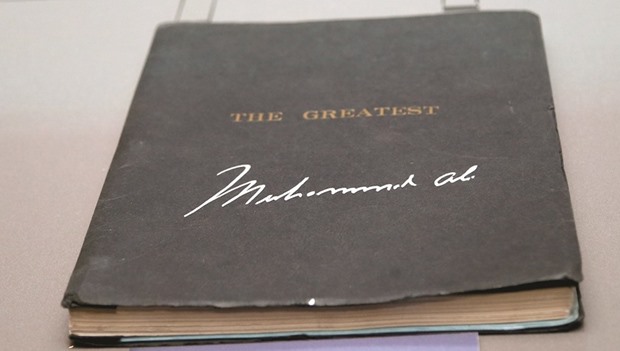
A signed 130-page production-used script of The Greatest by Muhammad Ali in 1977.
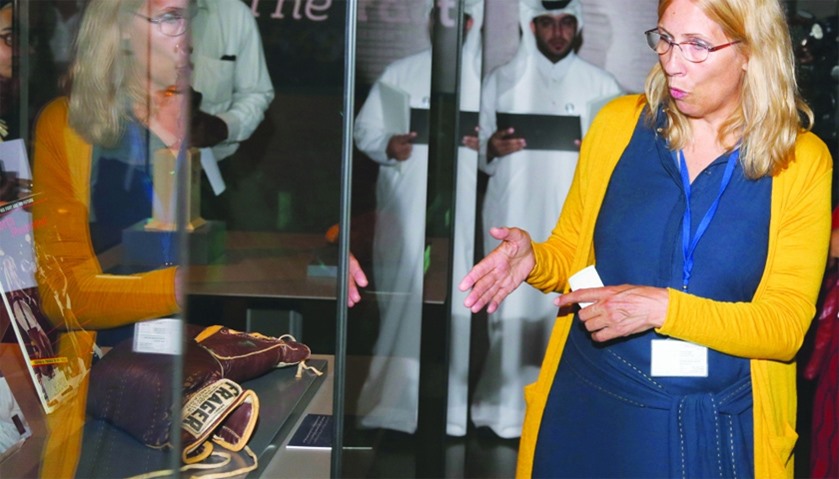
Olympic and Sports Museum head of Conservation Susan Rees
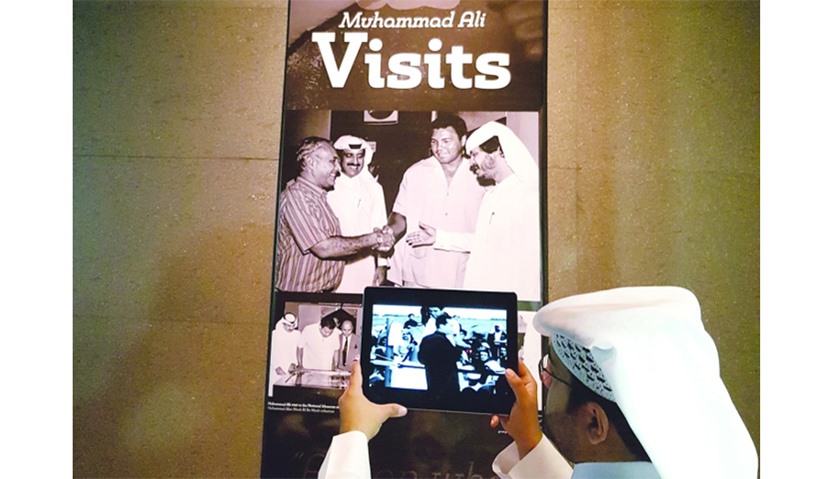
Qatar Museums Public and International Relations director Mohamed al-Othman
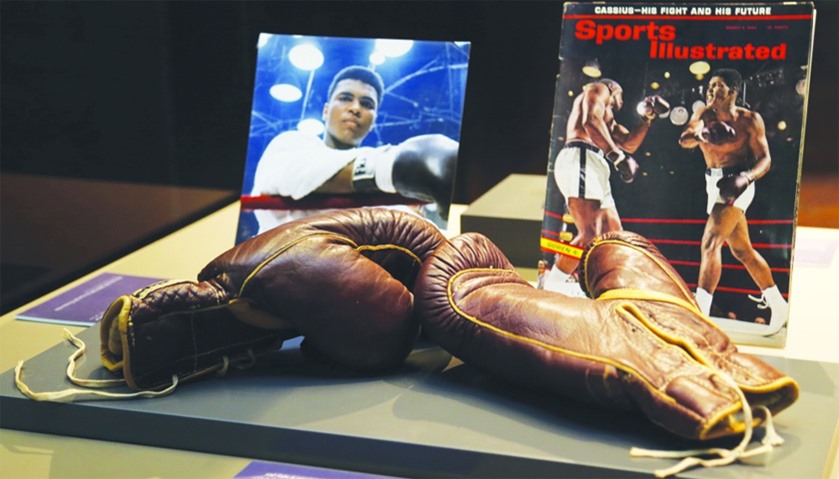
The gloves used by Ali during his first fight against Liston in 1964.
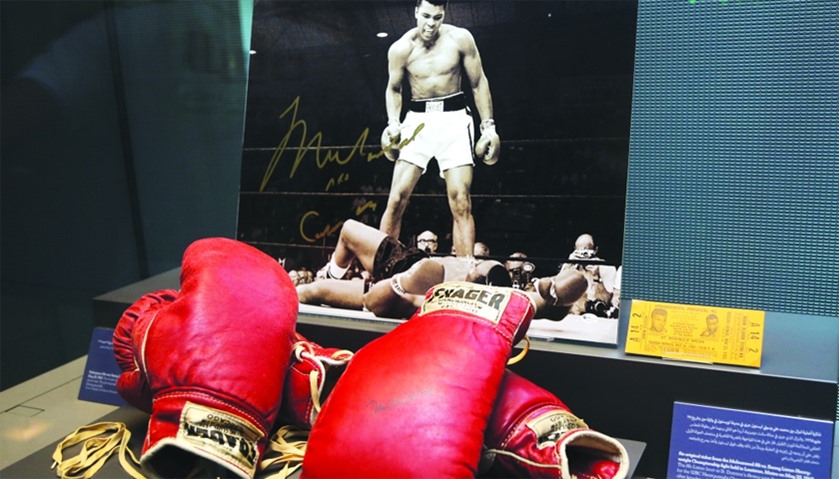
Muhammad Ali - Tribute to a Legend exhibition
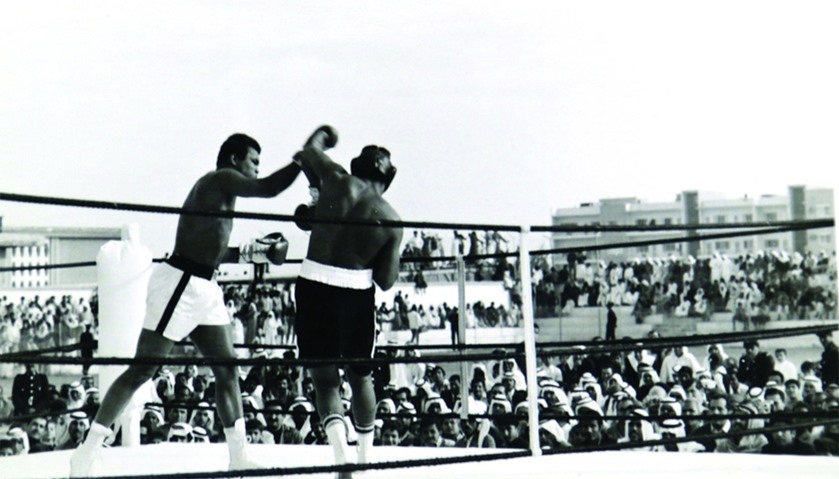
Muhammad Ali - Tribute to a Legend exhibition
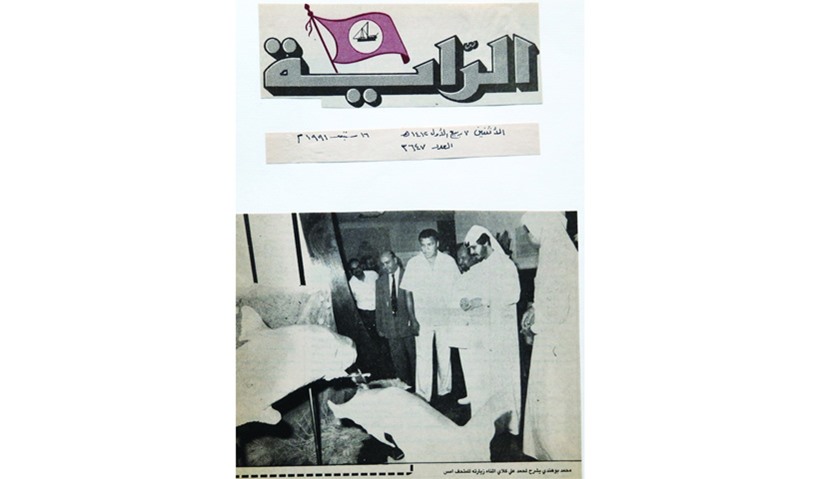
A clipping from Gulf Times sister Arabic daily Arrayah about Ali\'s visit to Qatar.
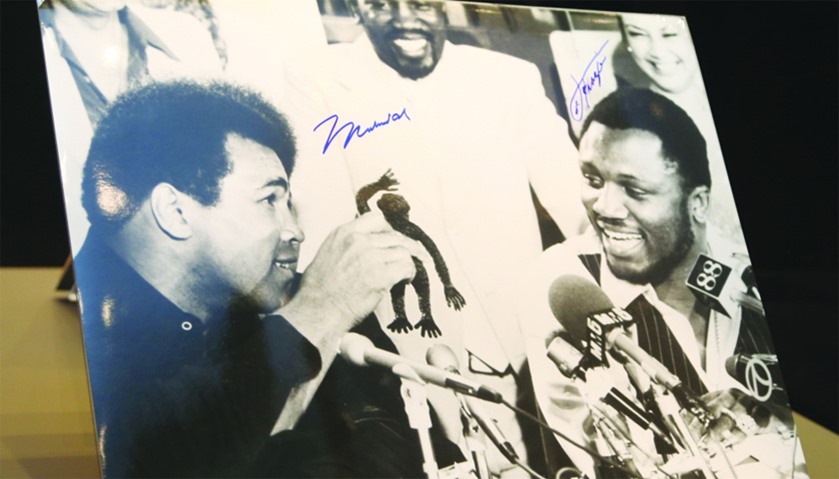
Muhammad Ali - Tribute to a Legend exhibition
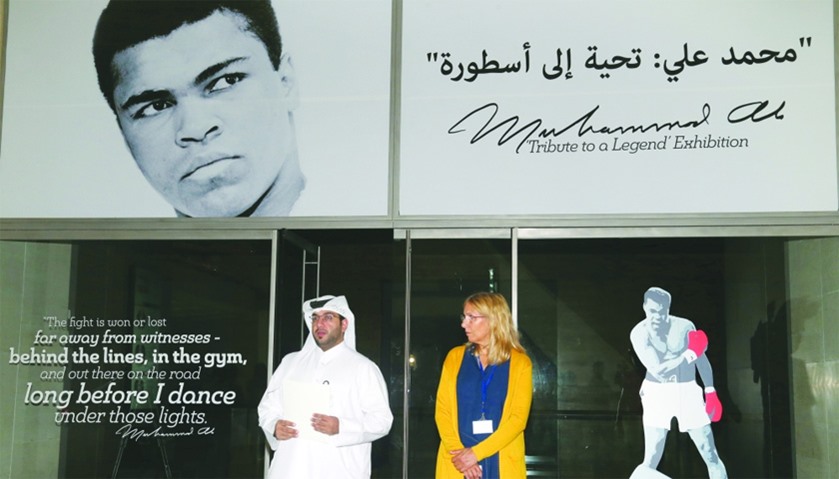
Al-Othman and Rees speak to reporters
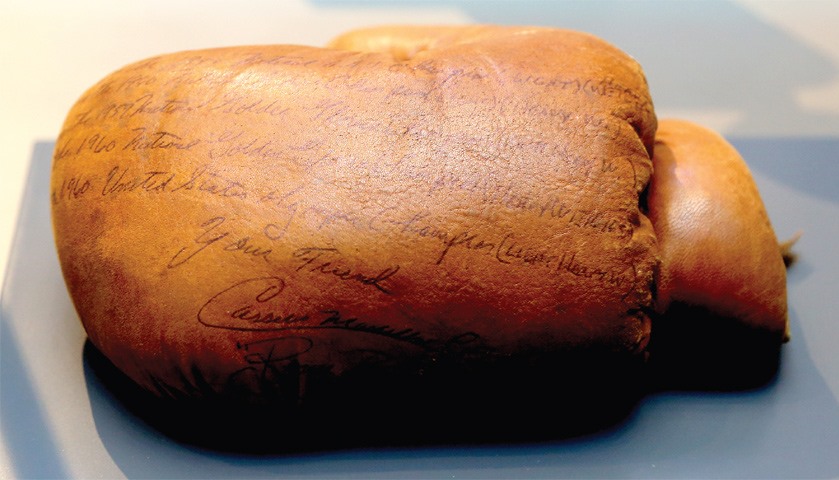
A signed boxing glove of then-Cassius Clay in 1960.
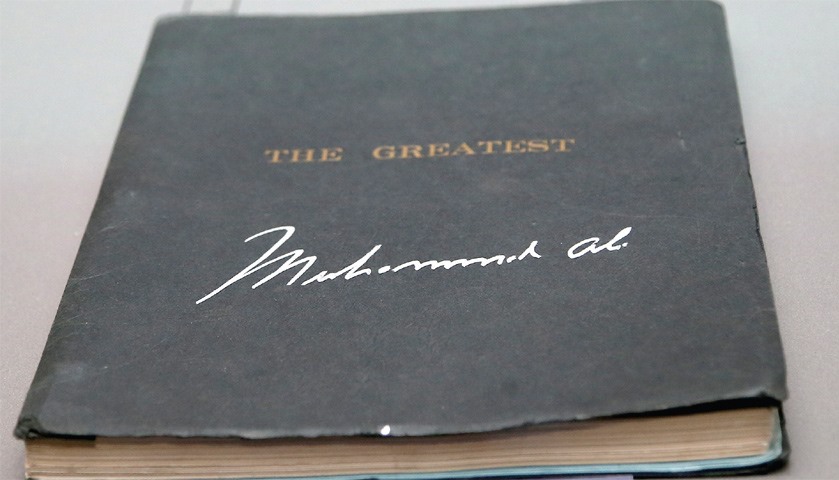
A signed 130-page production-used script of The Greatest by Muhammad Ali in 1977.
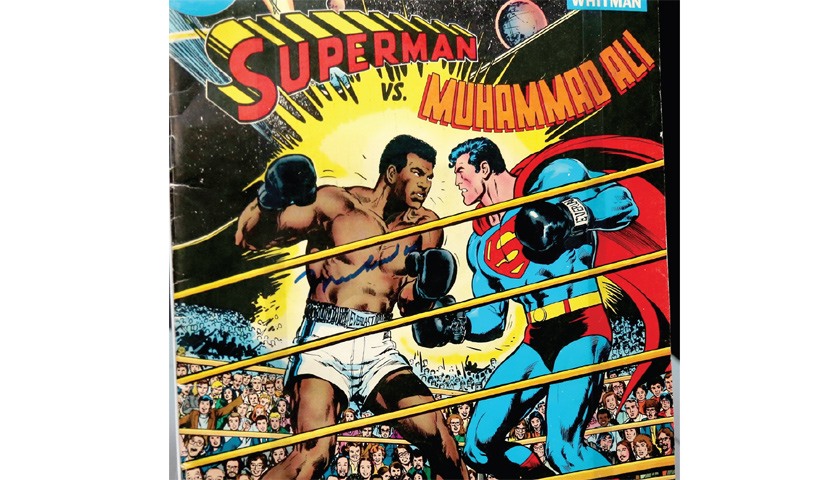
A comic book published by DC Comics in 1978 featuring Superman vs. Muhammad Ali.
